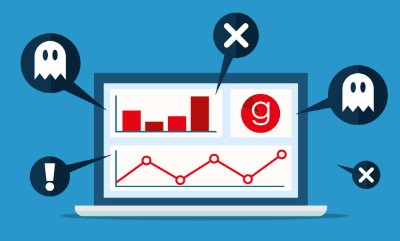Semalt Expert: How To Stop Referral Spam Occurring in Google Analytics

Ensuring that one has an optimized Google Analytics is the only way to make sure that the marketing campaign used by a business or an individual is efficient and that the website is working as expected. However, in the process of optimizing Google Analytics, there are certain aspects sure to impact the working of analytics. Spam referrals are a nuisance to most marketers.
Igor Gamanenko, the Semalt Customer Success Manager, would like to focus your attention that referral spam technically occurs in two forms: spam web crawlers, and ghost referral traffic:
- Spam web crawlers. Most are automated processes that index a website in the same way that Google does. Some like Googlebot make their presence known and thus excluded from the analytics reports. Others that do not result in a bounce rate of 100%
- Ghost referrals. These send out fake HTTP requests which have the potential to create spam referrals. They combine with the legitimate traffic but do not get to visit the website but count in the final report.

Reasons to create spam referrals
People may create spam referrals to a website for several reasons. It may be on purpose or unintentional. One of the reasons why spam referrals appear on a website is due to lazy programming. Some programmers fail to complete the code for the bot, to the point that they fail to identify themselves properly. Other developers do not wish to have their automated bots blocked by the protocols that Google sets. Therefore, by disguising themselves as legitimate web traffic, they get to reach the site without interference. Other sinister developers opt to use spam referrals to get to the curiosity of users and install malware on their computers. Since these links look genuine to the users, they find no reason to doubt them.
Why are they bad?
For the most part, spam referrals interfere with the data used by Google Analytics, thus presenting skewed reports. Their presence means directing time to filter out the spam sessions, which marketers could otherwise spend doing other productive purposes on the site. Without knowing that a site is indeed harboring spam referrals, one may end up making poor choices that may affect SEO optimization and ranking.

Protecting against spam referrals
When one identifies a possible problem emanating from the way Google Analytics produces its reports, they can try to filter it out from the statistics. However, this is not an assurance that these domains will not recur.
It is surprisingly easy to do this if they are focusing on removing the unwanted automated traffic. The problems affecting the website, when it comes to spam referrals, lies in the ".htaccess" file. Many bloggers suggest that individuals can manipulate the file themselves to get rid of unwanted traffic. However, it is a very technical file and contains very many domain settings and redirections. Therefore, making a simple mistake without clarity of what one needs to do, can have detrimental impacts on a website. It is wise to have experienced developers manage the file safely.
The .htaccess file may block all crawlers, and clear their history from the site. Nevertheless, ghost referrals may require more effort. The advanced segment in Google Analytics comes in handy here, when trying to weed out the very worst of these referrals.